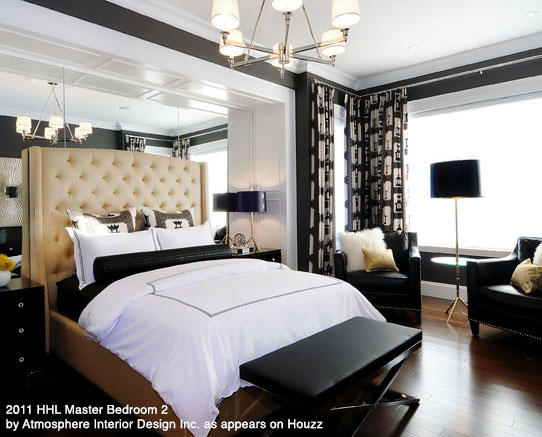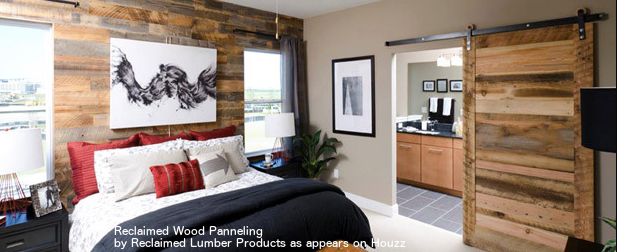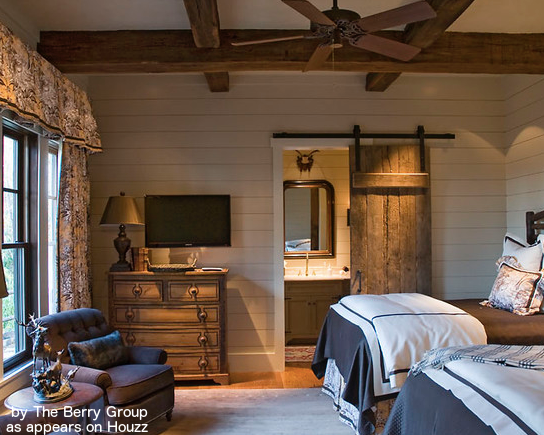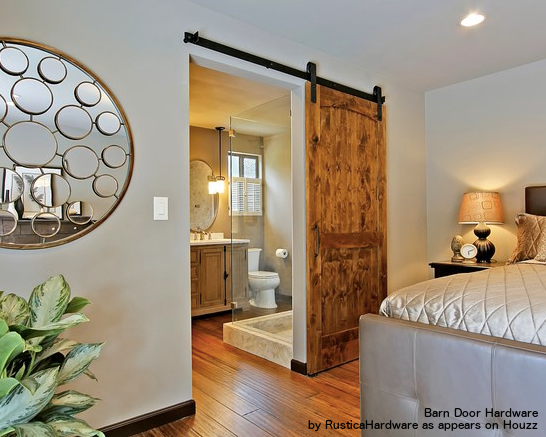Category Archives: Bedroom Design
Things We Like: Bedrooms In The Attic
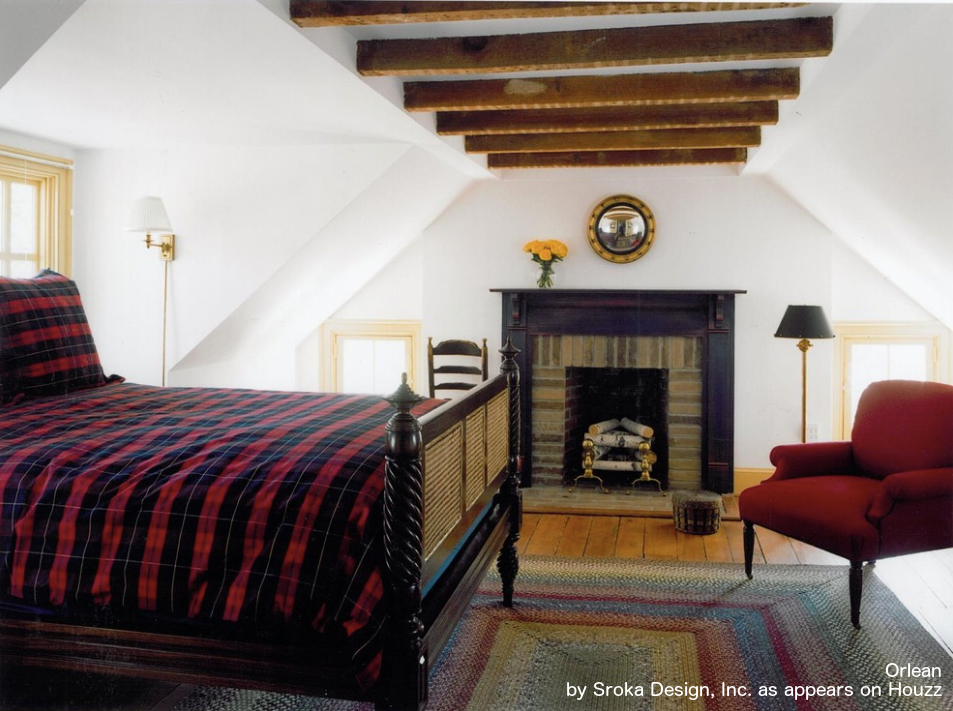
Post by Kyle St. Romain.
Now that I’m temporarily back in the world cable television, I’ve been able to catch up on all my favorite HGTV shows. Having watched countless episodes of Rehab Addict, Property Brothers, and Love it or List it (to name a few), I’ve noticed a bit of a trend: attic spaces converted into master bedrooms. This concept is especially apparent in older New England homes.
But why build a bedroom in the attic? Many older homes were never designed to accommodate a large master suite, something in high demand for today’s homeowner. And when lot size limits your ability to build an addition to your home, an attic bedroom provides a creative solution. While the idea of an attic bedroom initially seemed a bit strange, it’s actually started to grow on me. I am much more partial to an attic bedroom than a basement bedroom. Have a look at some wonderful bedrooms occupying these often-wasted spaces.
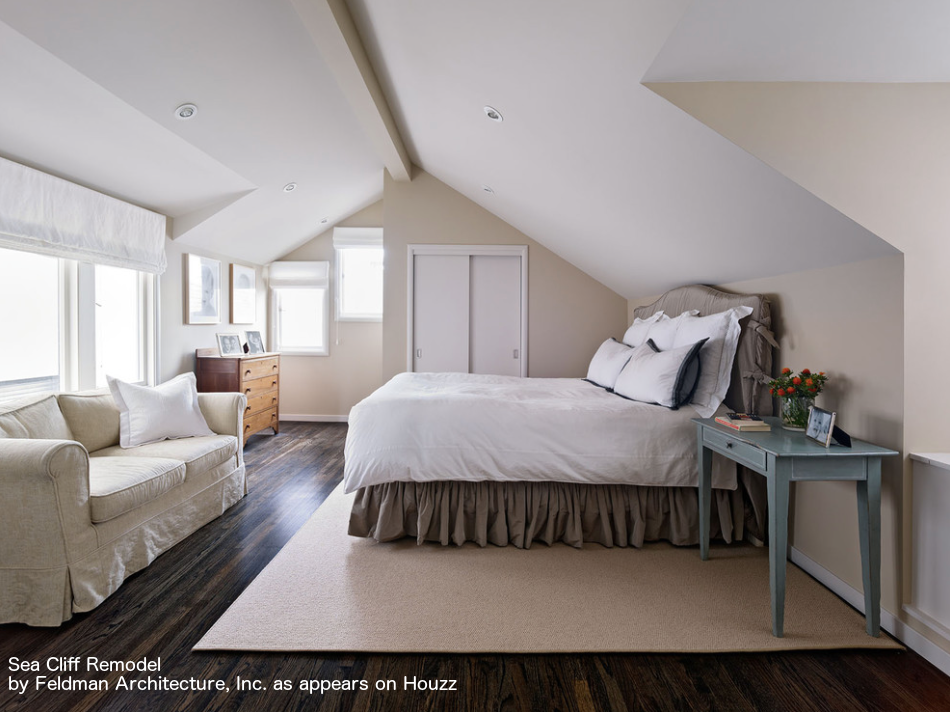
If you’re considering converting your attic into a master suite, there are some questions you should ask yourself:
- Will you mind climbing up extra stairs to your bedroom every day? Most modern bedrooms are located on the main level, which makes them convenient to access. With an attic bedroom, you’ll have the privacy of your own floor, at the cost of some extra cardio.
- Is your attic able to be converted to a master bedroom? The first consideration is size, as not all attics are big enough to accommodate a master suite. Also, if you have ductwork and hot water heaters in your existing attic it may be cost prohibitive to relocate all these utilities. Other considerations include installing windows, plumbing and electrical, as well as structural limitations. That said many attic bedrooms often feature very cool vaulted ceilings, which can add some serious visual appeal to your space that you couldn’t (or wouldn’t) otherwise create.
- Will converting your attic into a master bedroom yield a positive return on investment? To answer this question, you’ll have to do some research to see what price gains you may realize from increasing the size of your home’s living space. The return on your investment may not always be a top priority, however, especially if your home is already in your ideal neighborhood.
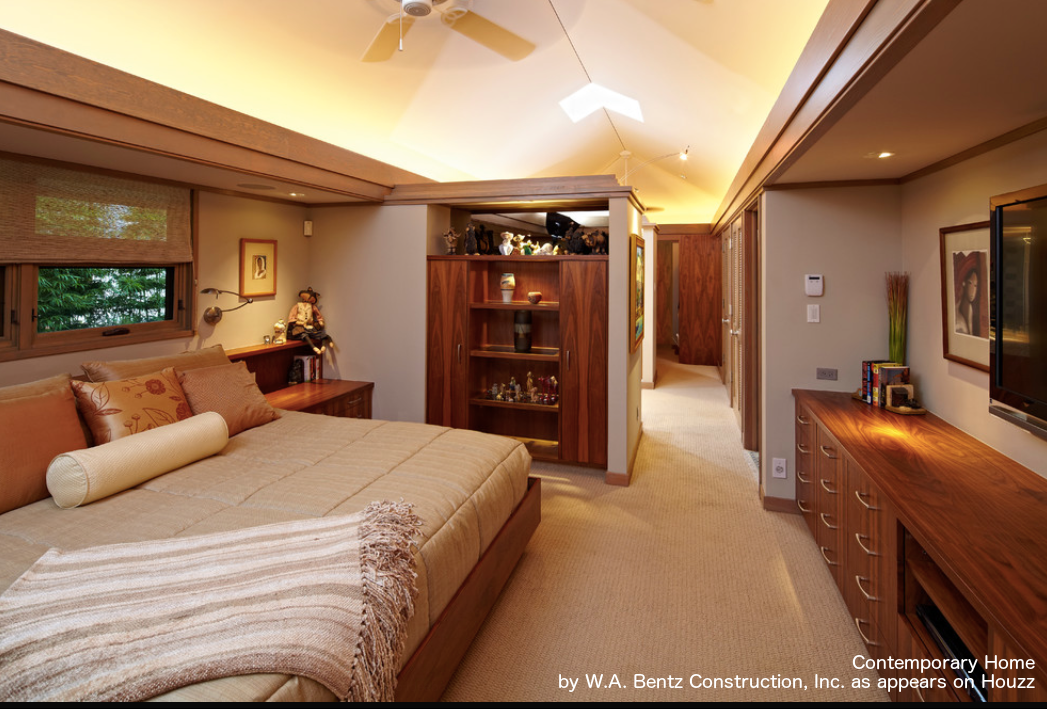
Understandably, attic bedrooms aren’t for everyone. But if your budget, lifestyle, and home can accommodate an attic-to-bedroom conversion, then you just may be able to create the master suite of your dreams. As always, I recommend checking out Houzz for more attic bedroom inspiration.
Things We Like: 2014 Color of the Year
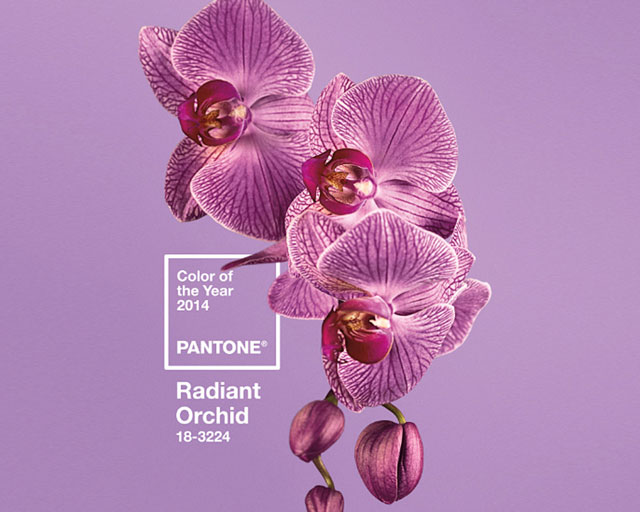
Post by Kyle St. Romain.
Pantone recently announced its color of the year for 2014: Radiant Orchid, replacing Emerald from 2013. You can read Pantone’s spring 2014 fashion color report. Sherman Williams followed suit announcing a more muted shade of purple called “Exclusive Plum” as its color of the year.
It shouldn’t be too surprising that purple is the consensus color considering that these decisions are made after surveying designers, manufacturers, and retailers throughout the world about the colors they plan to use in the coming seasons. The color of the year is more a formal announcement of the direction that’s already been decided, not necessarily something taking the design world by surprise (even if it is news to the rest of us).
With the announcement of the new color, however, you’re sure to notice purples popping up in all sorts of unexpected places. Expect the fashion industry to showcase the “it” colors in their spring catalogs, and interior designers tend to do the same. A little tip I learned in my interior design class is to thumb through Neiman Marcus’ spring catalogs for inspiration on how to create a color palette with that year’s trendy colors. I’m sure this tip holds true for other retailers as well. You can also use Adobe’s Kuler app to create a stunning color palette effortlessly.
Here’s a sample of a compound color palette based off of Radiant Orchid.
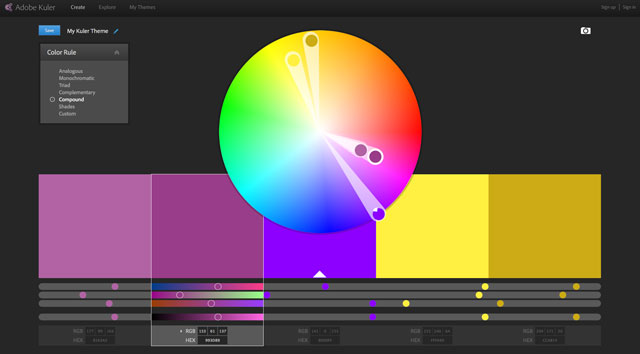
While you may be hesitant to incorporate such a vibrant purple with your personal style, you shouldn’t be. Radiant orchid, and all shades of purple for that matter, is surprisingly versatile. Radiant Orchid looks great accented with rich golds, sea greens, whites, and other shades of purple. It’s also quite simple to add a splash of Radiant Orchid in your home using a freshly painted accent wall, newly upholstered furniture, bed sheets, or a bright new throw rug. Whatever it is, it won’t be hard to find almost anything household or fashion related in Radiant Orchid this year.
The only consideration left is: How you feel about the color? As a TCU alumni, I couldn’t be more thrilled that purple is the color of 2014. While Radiant Orchid isn’t the same deep purple as TCU’s, it is nonetheless a very acceptable to me. A lot of the clothing I own winds up being some shade of purple, and now I may seem a bit trendier (if only for a year). I hope you enjoy the color of 2014 as well. If not, there’s always 2015.
If you’d like to read more about upcoming color trends, be sure to check out Pantone’s Spring 2014 Fashion Color Report.
Bedroom Design: Three Common Design Mistakes To Avoid When Designing Your Dream Bedroom
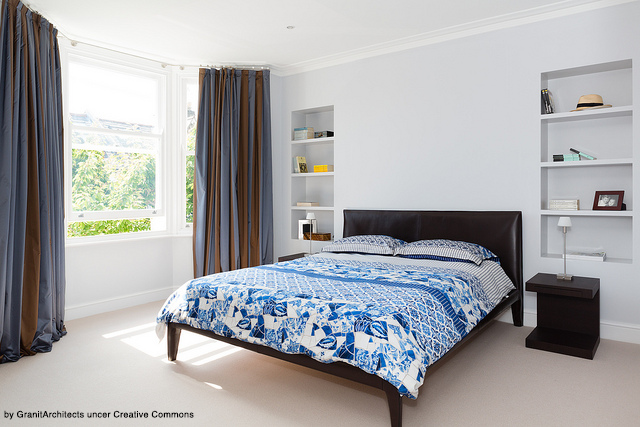
Post by Kyle St. Romain.
The opportunity to redesign your bedroom (or any other room in your house for that matter) can be as exciting as it is stressful, especially if it’s your first design project. Whether you’re decorating a brand new home, are undertaking a complete remodel or are just making a few simple tweaks to an existing room, there are a couple common design mistakes that you can avoid to ensure your space turns out even better than you imagined it.
Mistake #1: Over-Furnishing
One of the most common design mistakes is to over-furnish your space. Over-furnishing can happen in one of two ways, either by (1) trying to cram too many individual pieces of furniture into a space, or (2) by selecting furnishings that are simply too big.
Furnishing a room is a balancing act: you need enough furniture for the room to serve its purpose, but you also need to leave enough space to create movement in flow. To avoid over-furnishing your bedroom, always err on the side of less. In the bedroom, stick with the basics first: a bed, two nightstands, and maybe a nice armoire. If you find the room still feels empty after you get the basics situated, you can always add more. Think of furnishing your bedroom as more of an adventure than a destination, and enjoy the journey.
Check out my article on balanced bedroom design for a closer look at this important design element.
Mistake #2: Poor Lighting
Bedrooms suffer from poor lighting either by not having enough of it, or having too much. To block out unwanted outside light, be sure to use heavy window treatments that are easy to operate. Once you have the amount of light you let in under control, you can then think about artificial light.
It’s best to have a variety of lights. Variety can mean different color temperatures of light, different intensities of light, and different heights of lighting (floor lamps, table lamps, wall sconces, and overhead lights). I’ve written about the basics of bedroom lighting in the past, and encourage you to revisit that article to learn more about lighting.
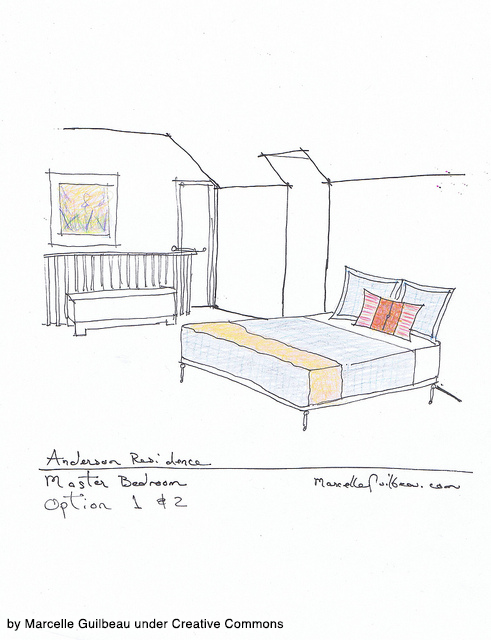
Mistake #3: Not Sticking To Your Budget
Your budget is probably the least fun part of designing your bedroom, but it is also the part you have the most control over. Instead of thinking of your budget as an obstacle, think of it as a game. With a little creativity, you won’t have to break the bank to create the bedroom of your dreams. Flea markets, antique stores, and auctions are all great places to find deals on bedroom furnishings and accessories.
One of my favorite resources to find deals on all sorts of things is Live Auctioneers, a website that enables you to participate in live auctions all over the world. While shipping can be expensive for larger items, you can still find great deals (with reasonable shipping) on all sorts of accessories like lamps, artwork, and other accent pieces. If there is something you like that you can’t find elsewhere, try making it yourself. DIY projects can be a great way to get exactly what you want for less, especially if you are a bit crafty.
One thing you don’t want to try to cut corners on, however, is the bed. Since the bed is the whole point of having a bedroom, be sure to get a quality mattress. We spend nearly one-third of our lives in bed, and a comfortable mattress is an investment in your health and well-being. Be sure to check out my previous article for tips on how to create a luxury bed at home.
Things We Like: How To Make A Luxury Hotel Bed At Home
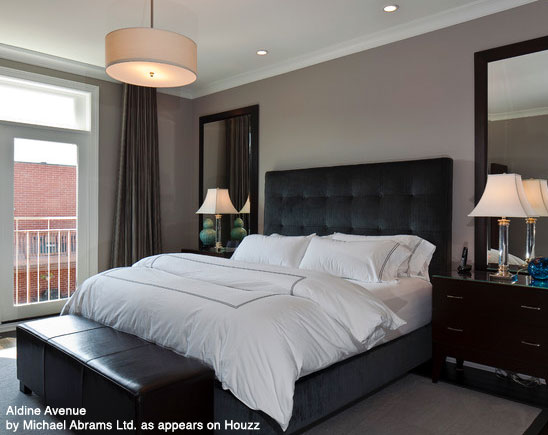
Post by Kyle St. Romain.
Beds are big business at hotels, so much so that many hotel chains have branded their own line of mattresses and bedding. Starwood’s Westin Hotels started the trend back in 1999, and a half a dozen other have followed suit, including: The Four Seasons, The W, Hyatt, Sheraton, Marriot, Ritz-Carlton, and Hilton. After all, the goal of any luxury hotel should be to sell you the best night’s sleep you’ve ever had — even if it’s back at your home.
If you’re looking to recreate a hotel sleeping experience at home, I’ve put together some of the essential components to help you create your own five-star bed at home.
- First, you need a Firm Mattress. The mattress is your first big decision that will affect your quality of sleep. I generally err on the side of more firm than soft when choosing a mattress, since you can always add additional elements to soften it up. You can’t, on the other hand, make a soft mattress feel firmer.
- Next, you’ll want to protect your mattress with a Felt Mattress Protector. This will protect the mattress from stains and spills, and add an additional layer of support.
- The biggest secret to making a five-star bed at home is the Featherbed. Think of this as a sort of a half-mattress that goes over the mattress protector but under the sheets. There are all sorts of options to choose from when selecting a featherbed, but you should generally go with something that is baffled and has a relatively high feather count.
- The Fitted Sheet is the first layer that your body will actually come into contact with, and it goes over the mattress, protector, and featherbed. You can usually buy the fitted sheets in a set with the flat sheet and pillowcases. When choosing sheets, go for something with a relatively high threat count made out of natural materials.
- The Flat Sheet is what you will sleep directly under, and will usually match the fitted sheet underneath.
- The final element of a luxury bed is the comforter. The type of comforter you choose depends mostly on your climate and personal preferences. Some people like to have both a lighter summer comforter and a heavier winter comforter to accommodate the change in temperature. You may also want to put another flat sheet or throw over the top of your comforter to complete the look — maybe even with a chocolate on top. Turn down service anyone?
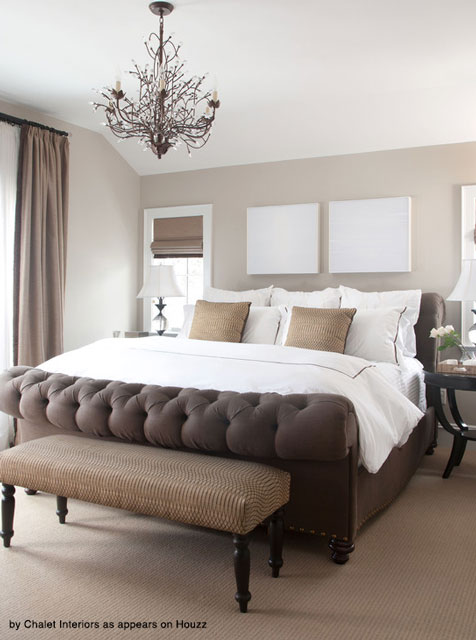
So, next time you wake up at a hotel feeling like you just had the best night’s sleep of your life, take a minute to see exactly what elements went into making the bed. And with so many hotels selling their own brands of bedding collections, you can even recreate every detail in your own home down to the mattress itself.
Before we go, here’s an interesting fact of the day: Did you know that Charles P Rogers sold more beds to luxury hotels in its first 100 years of business than any other company? Pretty impressive if you ask me.
